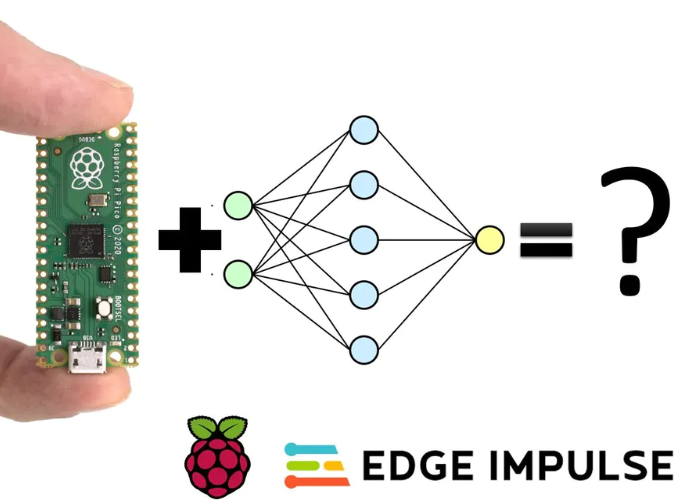
Federated learning combines local data samples to train an algorithm over several edge servers or devices. Federated learning is a method that uses local data to train algorithms in parallel, instead of using centralized servers for data exchange. This approach helps overcome some of the problems associated with centralized servers, such as security. However, federated education is not suitable for all situations. Federal learning is not possible for all organizations.
Defining federated learning
Federated learning is a method in machine learning where the central model can learn from diverse and augmented samples. This is useful when a single model has to be trained on several sites that have different hardware and network conditions. Patient data from one hospital may not be identical to that from another. Because patient characteristics can vary among hospitals, and they are likely to differ, this is why it may not be as comparable. For example, age distributions and gender ratios vary considerably across hospitals, and tertiary care hospitals often see more complex cases. Federated learning is a great way to efficiently train and deploy a model across multiple sites using minimal resources.
Multiple devices can be federated to learn the same machine-learning algorithm. These devices can update one model using data from multiple sources. They send only model updates to cloud. Data is encrypted so that nobody can see it. Mobile phones can then study the same prediction model but keep the training data local.

Implementing federated learning on edge devices
Data scientists have exciting prospects for federated-learning implementation on edge devices. An innovative learning paradigm is needed to handle the growing amount of data generated from connected devices. Due to the high computational power required and privacy concerns, it is essential that these data are stored and processed locally. It is very easy to implement the federated learning feature on edge devices. These are just a few of the benefits. Learn more about how this emerging technology can help your data science efforts.
Federated learning is sometimes called collaborative learning. It trains an algorithm across multiple decentralized edge devices. This is different from traditional centralized machine intelligence techniques that rely on one server to train models. Different actors can create one machine learning model by allowing them to be trained from different edge devices. Moreover, this approach supports heterogeneous data, which is essential for many new applications.
Security concerns associated with federated education
FL's core philosophy is to protect privacy. This concept reduces the user's data footprint by using central servers or networks. FL is susceptible to security breaches. Furthermore, the technology is not mature enough to address all privacy concerns by default. This section will discuss some of the privacy issues that FL faces and some of the recent advances in the field. This is a summary of some of the most common security issues and possible solutions.
Trusted execution environments (TEEs) are necessary to address privacy concerns in federated learning. TEE is an environment that encrypts code and allows it to be executed only in the secure area of a main processor. To prevent tampering with the data, encryption is used on all participating nodes. This is a more complicated approach than traditional multiparty computing. This is a good choice for large scale learning systems.

Potential applications of federated education
Federated learning not only improves algorithmic models but also allows medical doctors to train machinelearning models from non-colocated patient data. This can be used to protect patient privacy and avoid sensitive data being exposed. HIPAA and GDPR have strict guidelines for handling sensitive data. Federated learning can help to overcome these issues while still allowing scientists access to this data. Federalized learning has many potential applications in medical research.
Federated learning can be used to develop a supervised machine learning system. This can be used to train algorithms using large datasets. Secure aggregation and differential privacy are used to protect your data. It can also be used to enhance performance of datasets, such the Wisconsin Breast Cancer Database. This system can improve individual model accuracy in medical imaging.
FAQ
What do you think AI will do for your job?
AI will replace certain jobs. This includes drivers, taxi drivers as well as cashiers and workers in fast food restaurants.
AI will create new employment. This includes data scientists, project managers, data analysts, product designers, marketing specialists, and business analysts.
AI will make it easier to do current jobs. This includes accountants, lawyers as well doctors, nurses, teachers, and engineers.
AI will make existing jobs more efficient. This includes jobs like salespeople, customer support representatives, and call center, agents.
AI: What is it used for?
Artificial intelligence is a branch of computer science that simulates intelligent behavior for practical applications, such as robotics and natural language processing.
AI is also referred to as machine learning, which is the study of how machines learn without explicitly programmed rules.
Two main reasons AI is used are:
-
To make life easier.
-
To accomplish things more effectively than we could ever do them ourselves.
Self-driving automobiles are an excellent example. AI is able to take care of driving the car for us.
Who invented AI?
Alan Turing
Turing was first born in 1912. His father was clergyman and his mom was a nurse. At school, he excelled at mathematics but became depressed after being rejected by Cambridge University. He started playing chess and won numerous tournaments. After World War II, he worked in Britain's top-secret code-breaking center Bletchley Park where he cracked German codes.
He died in 1954.
John McCarthy
McCarthy was born in 1928. He studied maths at Princeton University before joining MIT. There he developed the LISP programming language. He was credited with creating the foundations for modern AI in 1957.
He died in 2011.
Is AI the only technology that is capable of competing with it?
Yes, but not yet. There have been many technologies developed to solve specific problems. However, none of them match AI's speed and accuracy.
What is AI and why is it important?
In 30 years, there will be trillions of connected devices to the internet. These devices will include everything, from fridges to cars. The combination of billions of devices and the internet makes up the Internet of Things (IoT). IoT devices will be able to communicate and share information with each other. They will also be capable of making their own decisions. Based on past consumption patterns, a fridge could decide whether to order milk.
It is predicted that by 2025 there will be 50 billion IoT devices. This is a tremendous opportunity for businesses. But it raises many questions about privacy and security.
Statistics
- In the first half of 2017, the company discovered and banned 300,000 terrorist-linked accounts, 95 percent of which were found by non-human, artificially intelligent machines. (builtin.com)
- That's as many of us that have been in that AI space would say, it's about 70 or 80 percent of the work. (finra.org)
- The company's AI team trained an image recognition model to 85 percent accuracy using billions of public Instagram photos tagged with hashtags. (builtin.com)
- According to the company's website, more than 800 financial firms use AlphaSense, including some Fortune 500 corporations. (builtin.com)
- Additionally, keeping in mind the current crisis, the AI is designed in a manner where it reduces the carbon footprint by 20-40%. (analyticsinsight.net)
External Links
How To
How to get Alexa to talk while charging
Alexa, Amazon's virtual assistant can answer questions and provide information. It can also play music, control smart home devices, and even control them. And it can even hear you while you sleep -- all without having to pick up your phone!
You can ask Alexa anything. Just say "Alexa", followed by a question. You'll get clear and understandable responses from Alexa in real time. Alexa will improve and learn over time. You can ask Alexa questions and receive new answers everytime.
Other connected devices, such as lights and thermostats, locks, cameras and locks, can also be controlled.
Alexa can also adjust the temperature, turn the lights off, adjust the thermostat, check the score, order a meal, or play your favorite songs.
Alexa to speak while charging
-
Step 1. Step 1. Turn on Alexa device.
-
Open Alexa App. Tap Settings.
-
Tap Advanced settings.
-
Select Speech Recognition
-
Select Yes, always listen.
-
Select Yes, you will only hear the word "wake"
-
Select Yes and use a microphone.
-
Select No, do not use a mic.
-
Step 2. Set Up Your Voice Profile.
-
Add a description to your voice profile.
-
Step 3. Step 3.
Use the command "Alexa" to get started.
Ex: Alexa, good morning!
Alexa will respond if she understands your question. For example, "Good morning John Smith."
Alexa will not reply if she doesn’t understand your request.
-
Step 4. Restart Alexa if Needed.
After making these changes, restart the device if needed.
Notice: If you modify the speech recognition languages, you might need to restart the device.